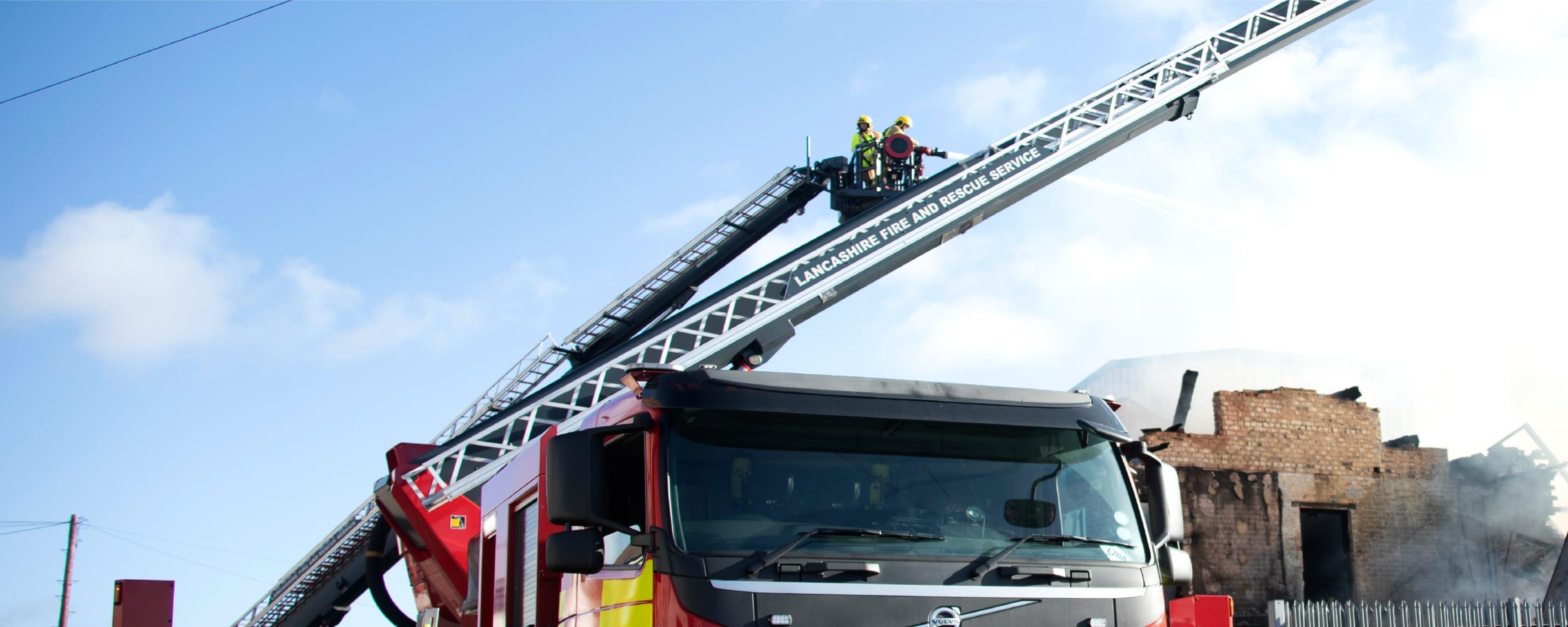Fire Safety (England) Regulations 2022 (Coming Into Force Jan 2023)
The Fire Safety (England) Regulations 2022 (the Regulations) came in to force on the 23rd January 2023. These are an important step towards implementing the recommendations of the Grenfell Tower Inquiry Phase 1 report. The Regulations were introduced under Article 24 of the Fire Safety Order.
The NFCC has released a video which explains the upcoming Fire Safety (England) regulations requirements [opens in a new tab].
Why are these changes being introduced?
Following the devastating Grenfell Tower Fire in 2017, the Grenfell Tower Inquiry was established. To meet the Inquiry’s Phase 1 recommendations, the Fire Safety (England) Regulations 2022 (the Regulations) were introduced.
The Regulations apply to England only. The Regulations can be found at on the UK Government website (opens in a new tab).
What do the Fire Safety (England) Regulations require responsible persons to do?
Most of the requirements set out in the Regulations are imposed on the responsible person (RP), which RPs need to plan and prepare for ahead of the Regulations coming into force.
The regulations require RPs in multi-occupied residential buildings to take specific actions, depending on the height of the building:
some provisions apply regardless of height
more are needed once a building reaches 11 metres, and
further requirements are introduced when a building reaches 18 metres (or 7 storeys) or more.
The Regulations set out requirements for responsible persons of all multi-occupied residential buildings, of two or more sets of domestic premises:
Fire Safety Instructions: they must provide relevant fire safety instructions to their residents on how to report a fire and what a resident must do once a fire has occurred.
Fire Door Information: provide residents with information relating to the importance of fire doors in fire safety.
The Regulations also set out requirements for RPs of multi-occupied residential buildings of over 11 metres in height:
The Regulations for high-rise residential buildings (at least 18m or 7 storeys in height) also require responsible persons to:
Building Plans: provide their local FRS with up-to-date building floor plans by electronic means and to place a hard copy of these plans, alongside a single page building plan which identifies key firefighting equipment, in a secure information box on site.
External Wall Systems: provide to their local FRS information about the design and materials of a high-rise building’s external wall system and to inform the FRS of any material changes to these walls. Also, they will be required to provide information in relation to the level of risk that the design and materials of the external wall structure gives rise to and any mitigating steps taken.
Lifts and other Key Fire-Fighting Equipment: undertake monthly checks on the operation of lifts intended for use by firefighters, and evacuation lifts in their building and check the functionality of other key pieces of firefighting equipment. They will also be required to report any defective lifts or equipment to their local FRS as soon as possible after detection if the fault cannot be fixed within 24 hours, and to record the outcome of checks and make them available to residents.
Secure Information Boxes: install and maintain a secure information box in their building. This box must contain the name and contact details of the RP and hard copies of the building floor plans.
Wayfinding Signage: install signage visible in low light or smoky conditions that identifies flat and floor numbers in the stairwells of relevant buildings.
What do RPs need to do now?
RPs need to start planning now to be prepared for the changes. The PPRU is working with the Home Office to support the development of standard templates to assist both RPs and FRSs to ensure consistent and useful information is collected and received.
RPs are encouraged to:
Begin to use the Fire Risk Assessment Prioritisation Tool (the FRAPT), to start forming their fire risk assessment review prioritisation strategies. RPs should first consider the accompanying guidance (opens in a new tab). RPs should ensure their reviewed assessments take into account the requirements of the FSO (as amended).
Consider what necessary additional information they must share with FRSs and begin to submit. To find your relevant FRS Fire England have produced a search function via the UK Government (opens in a new tab) site.
The preferred format for how RPs provide information to FRSs is detailed within the Home Office guidance located here (opens in a new tab).
When will the changes take effect?
The FSA commenced on 16 May 2022. This means that RPs should now (if they have not already done so) consider when to review their fire risk assessments, to ensure these take account of any risk from the external wall. It is important that RPs are directed to, and consider the more detailed guidance from the Home Office about when and how to go about this.
A new Fire Risk Assessment Prioritisation Tool has been made available. The prioritisation tool is an online tool designed to support Responsible Persons to develop a prioritisation strategy for updating their fire risk assessments, following commencement. The prioritisation tool can be accessed within The Fire Safety Act commencement guidance, available on the Gov.uk website (opens in a new tab).
The requirements to provide additional information to FRSs, The Fire Safety (England) Regulations 2022 came into force on 23 January 2023.
The UK Government published Guidance (opens in a new tab) to support RPs to comply with the new Regulations.
Where can I find out more information?
You can find out more by visiting the NFCC website (opens in a new tab).
The Fire Safety Act can be found here (opens in a new tab) with factsheets and guidance here (opens in a new tab). The Fire Safety (England) Regulations can be found here on the UK Government website (opens in a new tab).
The Home Office has produced a series of fact sheets (opens in a new tab) which provide more detailed information on what the Regulations mean in England:
N.B. all the above links open on a new tab.
Assessment of external wall systems
Guidance on the assessment of External Wall Systems (EWS) was updated significantly in January 2022. The guidance applies to multi-occupied residential premises of all heights.
Until January 2022 the ‘Consolidated Advice Note’ (CAN) applied. This guidance has been withdrawn but remains available for reference purposes at [Withdrawn] Building safety advice for building owners, including fire doors (opens in a new tab).
The most recent guidance, entitled ‘PAS 9980:2022, Fire risk appraisal of external wall construction and cladding of existing blocks of flats – Code of practice’ is now available to download free of charge from PAS 9980:2022 on the BSI Group website (opens in a new tab).
PAS9980 provides guidance on when a Fire Risk Appraisal of External Walls (FRAEW) is likely to be needed, the competence required to undertake the assessment, the methodology to be applied and the resultant risk rating. If you are still unaware of the make-up and likely fire performance of your building’s EWS it is recommended that you instruct the services of a suitably qualified risk assessor, as future fire risk assessments are unlikely to be satisfactory without being able to evidence due consideration of the EWS make up and fire performance.
Proportionality applies, and the PAS 9980 includes a section describing the initial process to follow to determine if a full FRAEW is required. It is important to start with this assessment as traditionally constructed premises are unlikely to require a full FRAEW.
For further information see PAS 9980:2022 on the BSI Group website (opens in a new tab).
Future Building Safety Bill
The Building Safety Bill is designed to give residents more power to hold builders and developers to account and toughen sanctions against those who threaten their safety.
A new Building Safety Regulator will oversee the new regime and be responsible for ensuring that any building safety risks in new and existing high rise residential buildings of 18m and above (or of seven storeys or more) are effectively managed and resolved.
Further updates are available at: Building Safety Bill on the UK Government’s website (opens in a new tab).
Fire Safety Guidance In Purpose Built Flats
Fire safety guidance is currently being refined to accommodate the ongoing changes. Existing guidance, along with information on how to interpret and use it, is available in this document on Fire safety in purpose-built blocks of flats from the UK Government (opens in a new tab).
Simultaneous Evacuation Guidance
The National Fire Chief’s Council and our industry partners have published the fourth edition of the Simultaneous Evacuation Guidance (SEG) (opens in a new tab). The fourth edition replaces the third edition published in October 2020.
The SEG, which has been developed by fire safety professionals, seeks to actively discourage the ongoing and prolonged use of a waking watch. The latest edition makes a number of updates and improvements to discourage buildings from having onsite staffing where this may not be needed.
Guidance And Support For Leaseholders
A wide variety of fire safety advice and guidance is available on the Leasehold Advisory Service website (opens in a new tab).
Further Information
Contact our Business Fire Safety Team on 01772 866954 or send an email to ProtectionSupport@lancsfirerescue.org.uk (opens new draft email) for assistance.





